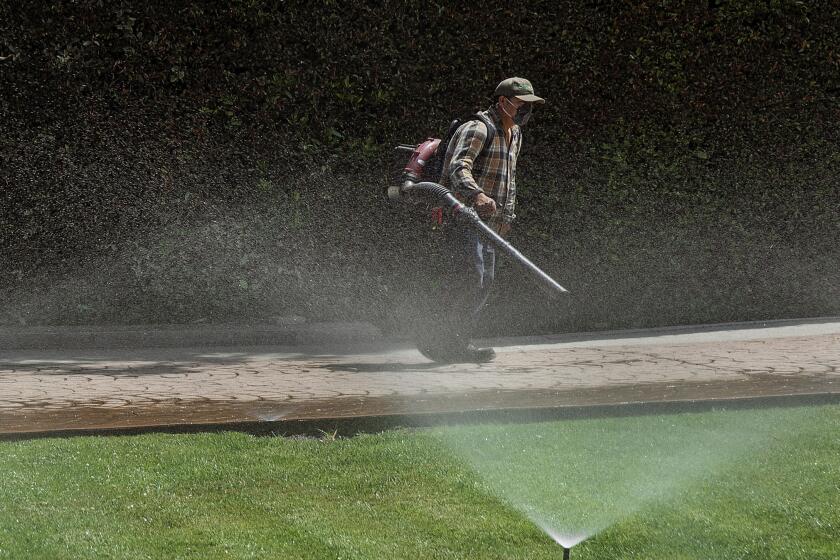Beautification Program Bears Fruit Across the Southland
- Share via
The spring sunshine flooding a downtown Los Angeles playground is starting to make things sprout: radishes, cucumbers, beans. Hope.
“This is my first garden,” said 8-year-old Adriana Tinoco, running her hands through a tiny plot of soil a few steps from the asphalt play yard. “I like planting even better than playing ball.”
The bright-eyed second-grader is one of thousands of inner-city children cultivating their first vegetable patch as part of an unusual effort to put government resources in the hands of Los Angeles residents.
Environmental experts from half a dozen federal agencies have joined at the local and state level to offer advice--and cash--for 39 neighborhood beautification projects across the metropolitan area.
The work includes restoration of natural wildlife habitat, removal of concrete so trees can be planted, repair of mountain trails and transformation of blighted vacant lots into community gardens.
Appropriately, leaders of the Los Angeles Urban Resources Partnership describe their beautification campaign as a “grass-roots” effort.
The federal government has contributed $500,000 in seed money for the projects. Local groups called upon to provide matching funds or sweat equity have come up with aid valued at $979,000.
At places such as Los Angeles Elementary School next to Pico Boulevard, the money seems to be going a long way. That’s where Adriana and her classmates spend part of recess each day tending their crops.
About $800 has been spent on seeds, fertilizer, basic gardening tools and wood for schoolyard planters. The money has been allocated by a Sunland-based nonprofit group called Gardens for Kids.
Supporters of Gardens for Kids raised $35,000 in donations of cash, material and labor to supplement their $28,000 federal grant. That is paying for construction of gardens at six schools and continuation of 15 others.
Other Urban Resources Partnership projects involve adults and children from the San Fernando Valley to San Pedro.
A group in Boyle Heights is building a tiny park on a small parcel on East 1st Street. Work crews drawn in part from homeless street children are planting trees in Hollywood. Schoolchildren in Mt. Washington are placing native plants and seedlings on a local hillside. Family vegetable plots large enough to help supply food for local preschools are being cultivated in parts of south Los Angeles.
Federal officials say Urban Resources Partnership programs are being tried this year in eight large cities after being launched two years ago in Atlanta, Chicago, New York City and Seattle. They calculate that $6 million in federal grants have so far “leveraged an additional $14 million” in community funding and labor.
On Monday, federal representatives announced that an additional $500,000 has been allocated to continue the program in Los Angeles during 1997.
Debbie Fryman, coordinator of the Los Angeles program, said applications for next year’s program will be accepted through May 31. Details are available at (213) 580-1055.
Back at Los Angeles Elementary, teacher Linda Akyuz hopes to continue her school’s garden for another year. She said about 500 children--half of the school’s enrollment--have taken part in this year’s planting.
“A lot of kids haven’t had a firsthand experience with a garden before,” she said. “A lot of them live in apartments and places where there is no room for one.”
Besides improving the look of the campus, gardening has worked its way into classroom math and English instruction and has become a study motivator, Akyuz said. And it will lead to a classroom feast before it’s over.
“The kids and I will do recipes in June and prepare some dishes,” she said. “We’ll invite parents.”
Grown-ups have shared their children’s gardening excitement, Akyuz said.
“They’ve come on Saturdays to garden work parties--70 adults and kids to one of them. Some parents even brought things to plant. It’s been very nice.”
More to Read
Sign up for Essential California
The most important California stories and recommendations in your inbox every morning.
You may occasionally receive promotional content from the Los Angeles Times.














